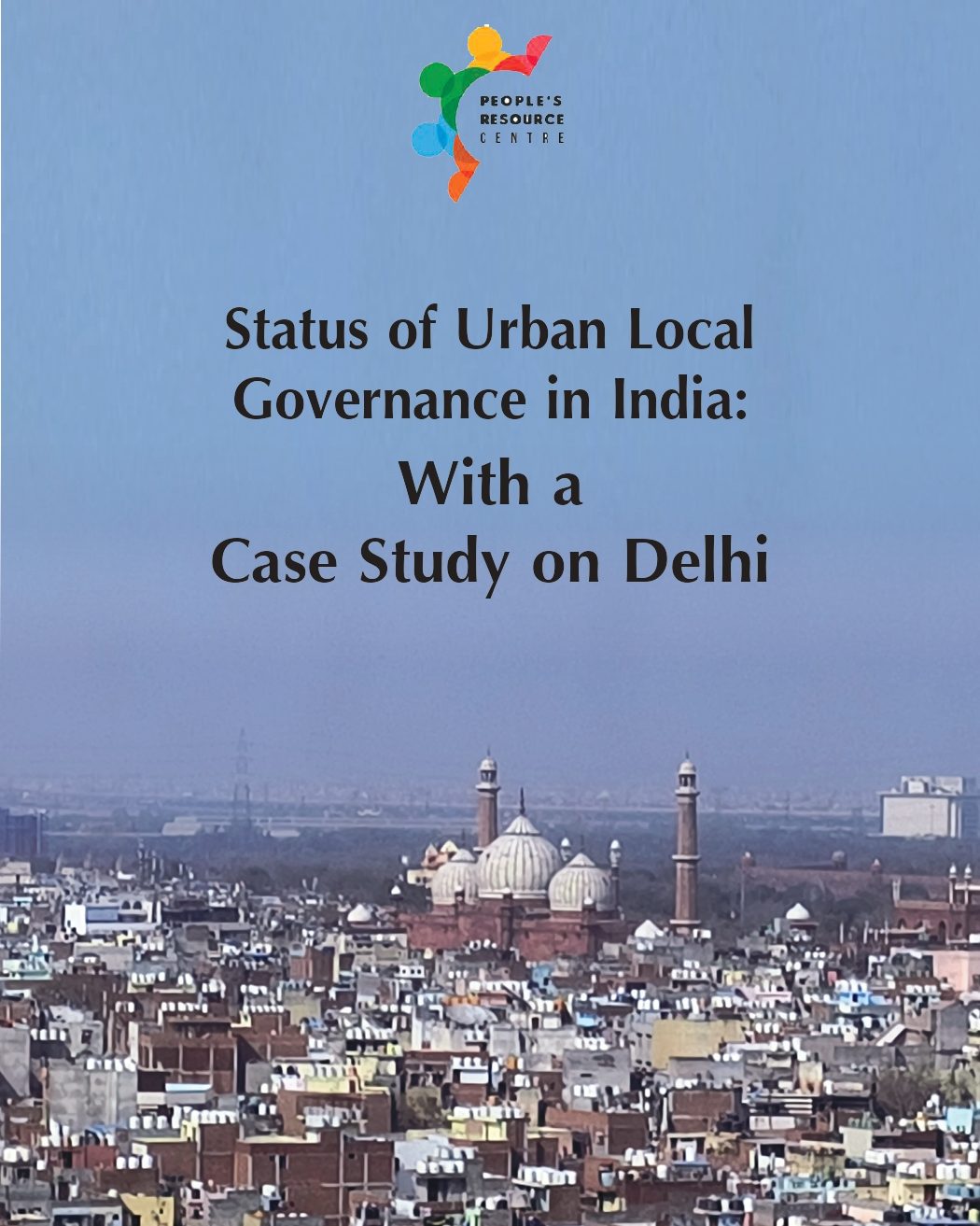Introduction
More than 55% of the world’s population currently resides in cities, with projections suggesting this figure could rise to 66% by 2050. A report from UN-HABITAT indicates that the number of individuals living in urban areas is anticipated to increase by an average of 29 million per year. (UN-HABITAT 2022) As the urban population grows, so does the incidence of poverty amongst the masses. Currently, 40% of Mexico City’s residents and one- third of Sao Paulo’s population are living at or below the poverty line. The rising population has led to various challenges regarding city governance, particularly in ensuring residents’ engagement in decision-making processes. This research aims to examine the status of the local urban governance institutions across India’s states. In particular, the study primarily emphasises the variation in how the 74th Constitutional Amendment Act is implemented by the states1 and the political dynamics involved in implementing its provisions by state and central governments, exploring challenges related to budgeting, fund distribution from the central to state and local governments, and the state government’s role in forming local governance bodies. The study further looks at the provisions of ensuring citizen’s participation in the Urban Local Bodies (ULBs). In doing so, the study, raises significant questions about decentralization and local governance in India, particularly through the lens of ULBs in Delhi.
The study becomes significant because as state power wanes in an era of globalization, cities have emerged as crucial players in tackling global political challenges such as climate change. Governments are increasingly ineffective in addressing climate changeproblems. States are often engaged in disputes over carbon emission reductions and transitions to renewable energy at international platforms like the United Nations Climate Change Conference. Importantly, cities are close to their citizens, making them significant for representation in global discussions. Some suggest that the traditional state-centred international system is faltering, asserting that “the city can change the world” (Barber 2013).
The impetus for examining decentralization in urban governance arises from two key factors. First, it establishes checks and balances within the government, and second, it fosters democracy in the political landscape, prioritizing public involvement. Enabling “citizens to participate in the delivery of goods and services enhances state effectiveness” (Bhattacharya 2022). Consequently, this promotes accountability and transparency, which is better supported by decentralized governance.
The paper provides several insights, revealing that cities have become weakened in the Indian context, with federal-unit states exerting greater control over them. City governance suffers from extreme stagnation regarding the devolution of powers and finances. Additionally, city governments have become less accessible in terms of basic services. Consequently, city residents are gradually losing their democratic agency amidst growing centralization. To illustrate this point, the study employs a case study of Delhi.
Through the case study of Delhi, the study further demonstrates that alternative and informal governance structures have emerged in response to the increased overlap of governmental spheres in Delhi (central, state, and local), coupled with the absence of effective oversight. These informal structures such as local mediators have become important nodes for accessing public services including water and roads. Its unique contribution lies in demonstrating how various informal local governance frameworks have emerged, which ultimately do not support the functionality of public institutions.
Another important finding of this study suggests that decentralization can sometimes create obstacles, particularly in the context of Delhi. While this holds for certain areas (keeping in mind that Delhi is characterized by a complex array of settlements and governance), some areas remain severely outside the welfare structure of the state. This case study brings forth insights from those areas which have been living on the edges of the city and are out of the purview of the state. In this regard, the report adds to the growing literature on urban governance.
The paper is structured as follows: Section 1 examines the discrepancies in the application of the 74th Constitutional Amendment Act across the twenty-eight states of India, which includes variations in the formation of Urban Local Bodies (ULBs), financial resources, powers, elections, and reservations. Section 2 contextualizes citizen participation and identifies specific avenues for citizens to actively engage in the decision-making processes of ULBs, while Section 3 evaluates the provisions of the 74th Amendment and state regulations, particularly in Delhi, to assess the extent of citizen involvement. Section 6 elaborates on the key finding while and Section 7 provides concluding remarks. The last section of the paper provides certain recommendation regarding structuring local governance to make it accessible for citizens.
Report by Sidhant Kumar, Research Associate.

